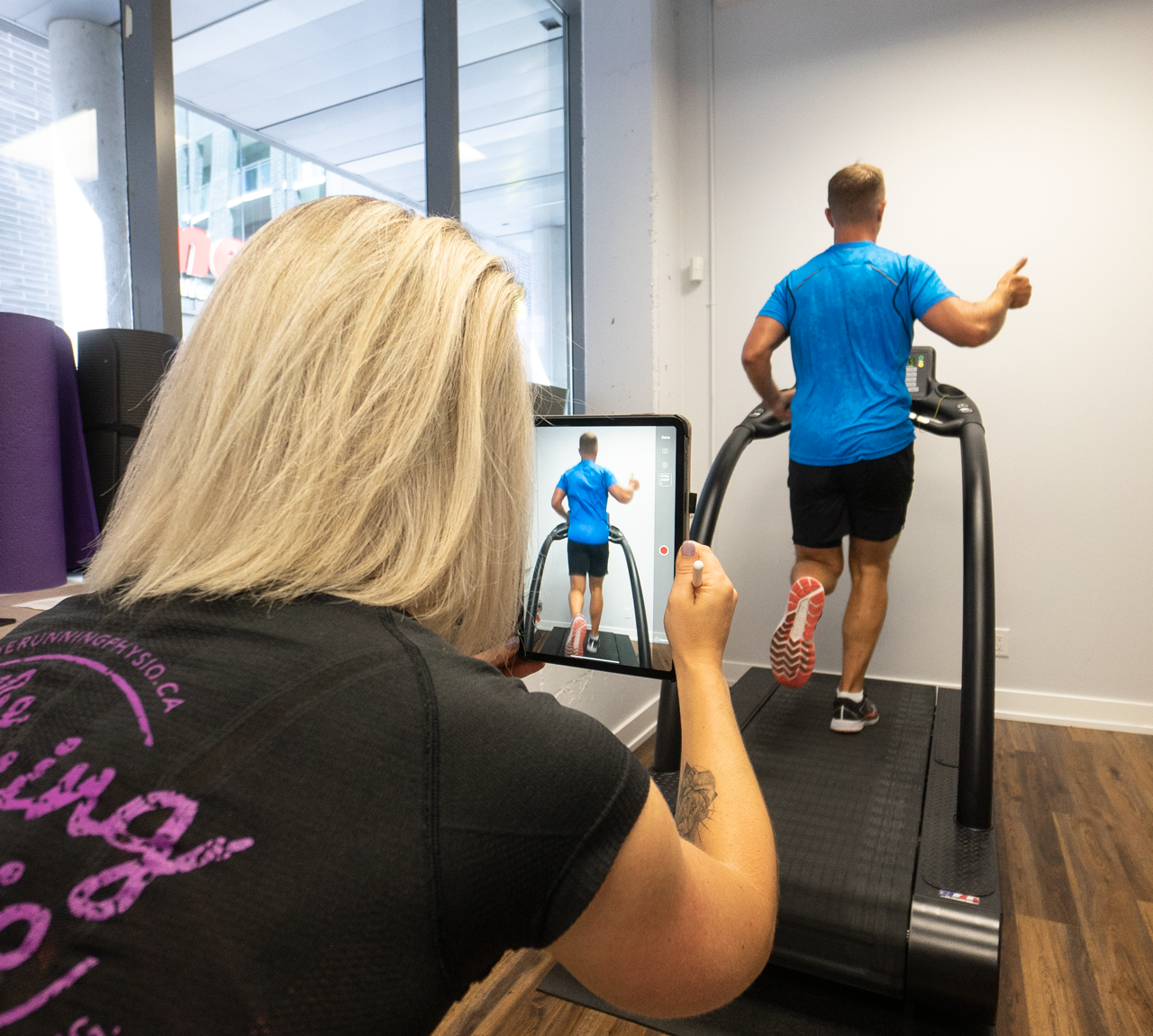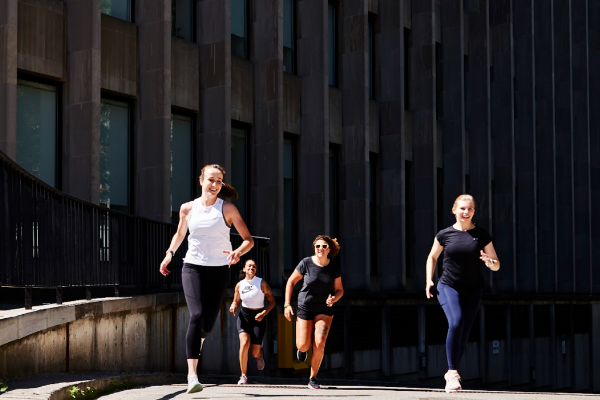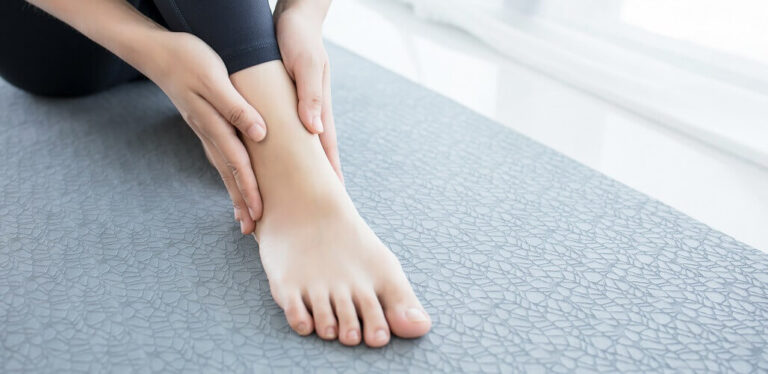Here at The Running Physio in Toronto, we understand just how important it is to our patients to be able to get their runs in.
We use the Three Cornerstone method to assess running-related injuries at The Running Physio. One of the key cornerstones is how you actually run, termed your “gait”.
Research shows that faulty movement patterns can cause increased joint stress, soft tissue strain, and muscle overuse. This is particularly true for distance runners who spend a lot of time on their feet doing repetitive motions.
All of our physiotherapists at The Running Physio in Toronto are trained in running assessment. We use slow-motion frame-by-frame video to break down your stride, and then provide you with real-time cues to improve any bad habits that we spot. Moreover, your gait may be the driving cause of your injury – so it’s crucial that we analyze it properly to both treat the issue at hand and also prevent it from happening again!
Whether you have suffered an injury from a marathon or if you need some support and guidance after a long period of inactivity, our therapists can help you get going again. Call us today to schedule an appointment.
Runners fully understand the importance of maintaining proper form and technique while you’re out on a trail, training for a marathon, or simply cruising through the neighborhood. At The Running Physio, we want to make sure that you are performing at your optimum levels of function, so you can avoid injury and get the most out of your sport!
Below are 5 tips to keep in mind when training to improve your running mechanics:
1. Cadence
A recent study published in the National Institutes of Health analyzed the effects of cadence on a runner’s likelihood of sustaining an injury. 45 healthy runners were studied to determine how differences in cadence affected loading on the hip and knee joints. Results concluded that a quicker cadence “generally leads a runner to hit midfoot compared to runners with longer strides,” which can cause pain or injury. To improve your cadence, try making your strides longer! This will reduce loading on the hips and knees, preventing injury.
2. Pelvic Alignment
Much of running is focused on the feet; however, pelvic posture plays a large role in running, as well. You can achieve proper pelvic alignment by doing certain hip position tests, such as vertical compression tests and hip extension tests.
With vertical compression, stand with someone behind you, with their hands on your shoulders. Have them push straight down. If your hips buckle, it means your pelvic alignment is off. This can be corrected with postural improvement, with the help of a physiotherapist.
With hip extension, kneel in front of a doorway with your back against the door jamb. Your left leg should be on the floor and your right knee should be bent over your right foot, directly in front of you. While you’re in this position, you should naturally have a small space between your lower back and the wall. Tilt your pelvis backward to remove this space. If this is difficult to do, your pelvic alignment may be off. This can also be corrected with postural improvement, with the help of one of our Toronto, ON physiotherapists.
3. Base of Support
In another study published in the National Institutes of Health, several running mechanics were analyzed through video assessments, including base of support. This is an important mechanic to evaluate, as foot placement is one of the most integral parts of running. It was noted that, as a general rule, “the left and right feet should not overlap in their ground contact location.” There should always be space between foot placement, as a narrow base of support has been known to cause painful conditions, such as tibial stress fractures and iliotibial band syndrome.
4. Heel Strike
Do you heel strike while running? Approximately 80% of runners strike the ground with their heels first, while 15% strike the ground with their toes first. While there’s nothing wrong with heel striking, sometimes it can be linked to knee or hip injuries. Unsure what’s best for you? Come on in for a visit!
5. Vertical Oscillation
It is no secret that technique plays a large role in running performance. Vertical oscillation refers to how much your bounce you have when you run. When your vertical oscillation is insufficient, it can lead to a premature touchdown of your swing leg or a low center of mass trajectory. However, excessive vertical oscillation can also cause runners to expend more energy than necessary. Both of these scenarios can be corrected by changing your stride, which can be accomplished with the help of our Toronto, ON physiotherapists.
We also offer:
- Walking Gait Analysis
- Return to Sport Evaluation
- Injury Risk Screening
- Return to Sport/Injury Prevention Training
Contact us today!
Are you ready to run at your peak level of performance? Contact our Toronto, ON physiotherapy practice today! At The Running Physio, we’ll examine your running mechanics to figure out how your running efficiency can be increased to improve performance and reduce your risk of injury. Call us today to find out how you can run at your highest potential!



